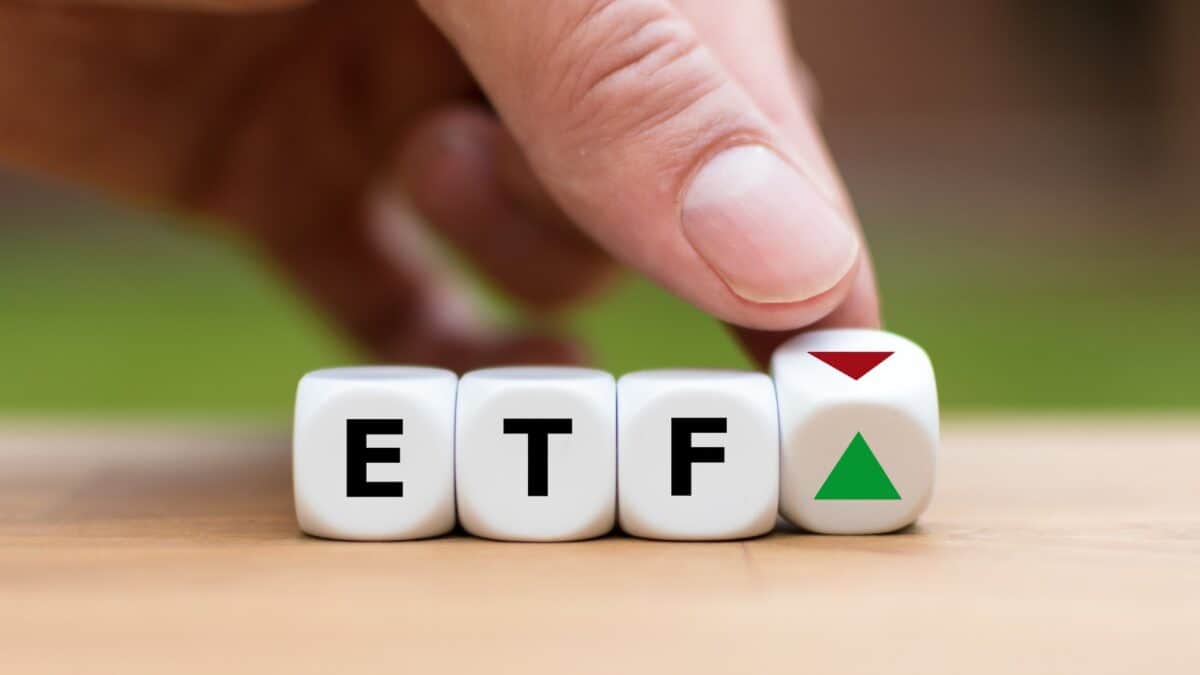Business
Target a £572,000 Retirement Fund with ETFs: Here’s How

Investors aged 50 and older who are concerned about their retirement savings may find Exchange-Traded Funds (ETFs) a beneficial option. These investment vehicles have gained popularity among global investors for their ability to offer low-cost diversification across various markets and themes. With the potential for significant returns, ETFs can help individuals build a retirement fund that meets their long-term financial goals.
The appeal of ETFs lies in their eligibility for tax-efficient accounts such as Individual Savings Accounts (ISAs) and Self-Invested Personal Pensions (SIPPs). According to the Investment Association (IA), ETF investors tend to be younger and higher-income individuals, with a notable 25% residing in London. Approximately 41% of fund investors are aged between 18 and 34, while only 17% are 55 and older. The IA identifies a lack of awareness and understanding as the primary barrier preventing many retail investors from considering ETFs.
ETFs Offer High Returns
The versatility of ETFs makes them an attractive investment option, particularly for those starting their investment journey later in life. For instance, the iShares S&P 500 ETF (LSE:CSPX) tracks the performance of a renowned index of blue-chip shares in the United States. This fund enables investors to spread their capital across hundreds of companies, providing exposure to various sectors. Over the past five years, this ETF has delivered an impressive average annual return of 14.4%, with a total expense ratio of just 0.07%.
While past performance is not an indicator of future results, the current market dynamics suggest that S&P funds may continue to excel, particularly due to their significant allocation to high-performing technology companies such as Nvidia, Microsoft, and Apple. For many investors, including myself, the S&P 500 fund remains a key component of a diversified portfolio.
Building a Retirement Fund
Investing in ETFs can lead to substantial retirement savings, even for those who start later. For example, a 50-year-old who invests £500 a month until reaching their State Pension age between 2044 and 2046 could amass a retirement fund of approximately £572,092, based on the historical performance of the S&P 500 fund.
In addition to the iShares S&P 500 ETF, there are numerous other thematic and sector-focused ETFs that investors can consider. The L&G Cyber Security ETF, which I also include in my portfolio, has provided an average annual return of 9% since its inception in 2020. Furthermore, the Xtrackers MSCI World Momentum ETF, which includes large and mid-cap companies from developed markets with high momentum scores, has yielded an average yearly return of 12.8% over the past five years.
Regardless of an investor’s experience or objectives, ETFs present a compelling opportunity for building wealth for retirement. As interest in these financial products continues to grow, it is crucial for individuals to educate themselves on the options available to them.
In conclusion, for those nearing retirement age without significant savings, exploring ETFs could be a strategic move to secure a more comfortable financial future. The combination of low costs, diversification, and the potential for high returns makes them a worthy consideration for any long-term investment portfolio.
-

 Health3 months ago
Health3 months agoNeurologist Warns Excessive Use of Supplements Can Harm Brain
-

 Health3 months ago
Health3 months agoFiona Phillips’ Husband Shares Heartfelt Update on Her Alzheimer’s Journey
-

 Science1 month ago
Science1 month agoBrian Cox Addresses Claims of Alien Probe in 3I/ATLAS Discovery
-

 Science1 month ago
Science1 month agoNASA Investigates Unusual Comet 3I/ATLAS; New Findings Emerge
-

 Science4 weeks ago
Science4 weeks agoScientists Examine 3I/ATLAS: Alien Artifact or Cosmic Oddity?
-

 Entertainment4 months ago
Entertainment4 months agoKerry Katona Discusses Future Baby Plans and Brian McFadden’s Wedding
-

 Science4 weeks ago
Science4 weeks agoNASA Investigates Speedy Object 3I/ATLAS, Sparking Speculation
-

 Entertainment4 months ago
Entertainment4 months agoEmmerdale Faces Tension as Dylan and April’s Lives Hang in the Balance
-

 World3 months ago
World3 months agoCole Palmer’s Cryptic Message to Kobbie Mainoo Following Loan Talks
-

 Science4 weeks ago
Science4 weeks agoNASA Scientists Explore Origins of 3I/ATLAS, a Fast-Moving Visitor
-

 Entertainment4 months ago
Entertainment4 months agoLove Island Star Toni Laite’s Mother Expresses Disappointment Over Coupling Decision
-

 Entertainment3 months ago
Entertainment3 months agoMajor Cast Changes at Coronation Street: Exits and Returns in 2025









